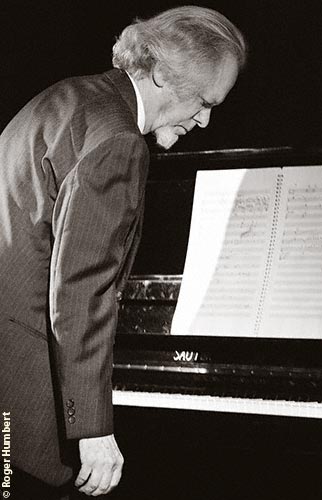But we also heard Bruce Mather's "Two Pieces", a late night lament which paired the 16th tone piano — all breathy and soft sighs — with Jean Laurendeau's expressive playing of the very expressive Onde Martenot, an electronically amplified keyboard with upright speaker. At the bottom of the Onde Martenot keyboard was a separate, moveable ring on a wire. When a finger pressed the wire, it sang away like a viola and, with the flip of a switch — much like a Hammond organ or an electric piano — a note from the piano keyboard changed its timbre.
And we thoroughly enjoyed Jack Behrens' charming and brief tribute to John Beckwith's 80th birthday in March — "For John Beckwith's 80th" (for string quartet). It was not written in microtones and it made good use of a violin flutter placed against a cello and violin pizzicato line. After a section with extreme abstracted rubato lines, the piece cycled back to the original violin flutter and pizzicato cello and violin line.
And then Alain Bancquart's "Habiter l'ambre" started with a 'horror movie' shimmer of sound from a pre-recorded tape; and the piano picked out a mid-keyboard line of notes. The composition's second taped introduction produced low tones and long and droning horizontal atmospheres. The third taped introduction developed into a modern world global clatter of engine drones and microtonal singing, with all of this ending in a static suspension of complex sound.
But — yes, it's a matter of opinion — the 'best' was saved for the last (or second last) in the programme.
The performance of John Beckwith's wonderful composition, "Fractions" — for 16th tone piano and string quartet — was a truly mobile and organic listening experience in which the 16th tone piano's struck tones and the string shrieks called and responded back and forth in a growing open walled environment of sound. The cello and violin then brought warmth. The piano produced voices and wobbly upright waveforms. Then after the strings intersected in stark open space, there was from the piano a last soft utterance and the concluding sigh of strings.
"Fractions" had that sense of human life to it. It contained multitudes, and it was about music, not the piano's 16 tones.
Postscript "I don't know what it means, but I guess that's up to a person's imagination."
(John Beckwith speaking after the concert about his composition, "Fractions".)


